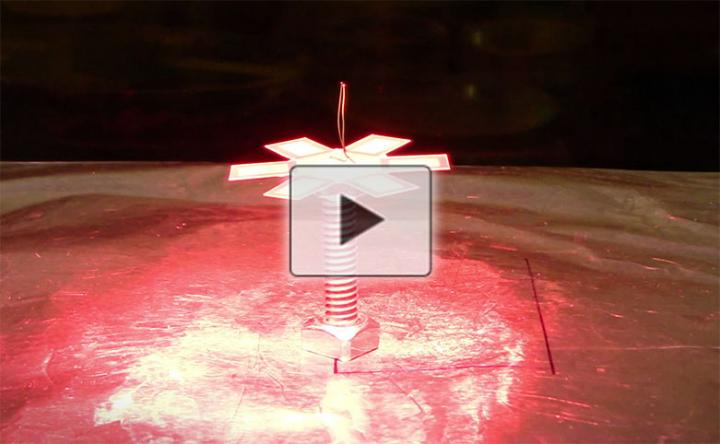
Credit: American Chemical Society
Many people fondly remember playing with toys known as Shrinky Dinks® — sheets of polystyrene plastic with shapes that kids can color, cut out and heat in an oven, where they shrink into thicker pieces of plastic. Now, researchers have repurposed shrink films for an unexpected use: making strong, durable grippers that could someday encapsulate materials or be incorporated into soft robotics. They report their results in ACS Applied Polymer Materials. Watch it in action here.
Shrinky Dinks® undergo their dramatic transformation because they are shape-memory polymers. Manufacturers pre-stretch the sheets of polystyrene so that when heated above 217 F, they shrink back to their former size. Michael Dickey, Jan Genzer and colleagues wondered if they could exploit these properties to make inexpensive grippers that would be stronger and retain their shape better than other soft materials used for this purpose, such as hydrogels and elastomers.
To find out, the researchers used an inkjet printer to pattern black ink in various shapes onto the surface of polystyrene sheets. When the researchers shone an infrared light on the cut-out shapes, the inked regions warmed faster than the blank areas, causing the polystyrene to wrap around the object to be gripped, such as a hex bolt. Removing the light locked the gripper’s shape in place. The team showed that grippers optimized for ink pattern, geometry and number of panels could suspend objects more than 24,000 times their own mass for several minutes before mechanical failure, or 5,000 times their own mass for months.
###
The authors acknowledge funding from the National Science Foundation.
Shrinky Dinks® is the registered trademark of K&B Innovations Inc. USA
The abstract that accompanies this study is available here.
The American Chemical Society, the world’s largest scientific society, is a not-for-profit organization chartered by the U.S. Congress. ACS is a global leader in providing access to chemistry-related information and research through its multiple databases, peer-reviewed journals and scientific conferences. ACS does not conduct research, but publishes and publicizes peer-reviewed scientific studies. Its main offices are in Washington, D.C., and Columbus, Ohio.
To automatically receive news releases from the American Chemical Society, contact [email protected].
Follow us on Twitter | Facebook
Media Contact
Katie Cottingham
[email protected]




